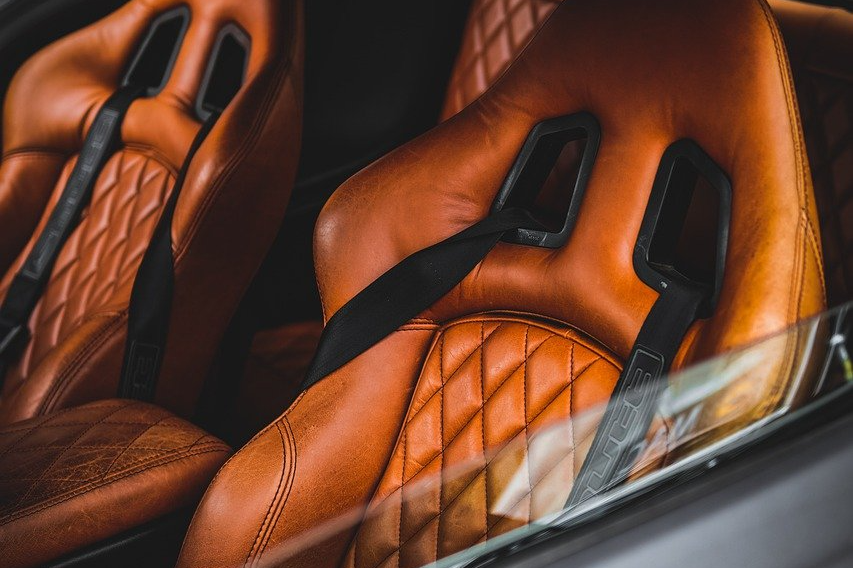
Essential Tips for Maintaining Leather Car Interiors
Share
Leather car interiors bring an undeniable sense of luxury and sophistication to your vehicle. However, maintaining that elegance requires proper care and attention. Automotive leather care is crucial not only for preserving the aesthetic appeal but also for ensuring the durability and value of your car over time. Without regular upkeep, leather can become prone to cracks, fading, and stains, detracting from your vehicle's overall appeal.

Beyond aesthetics, well-maintained leather seats provide comfort and a premium driving experience, making every journey enjoyable. Proper care also helps to retain your car's resale value, making it a wise investment in the long run. In this article, we will discuss the essential tips and techniques for cleaning, conditioning, and protecting leather interiors to keep them looking as good as new for years to come.
Understanding Leather in Cars
Types of Automotive Leather
Different types of leather are used in car interiors, each requiring unique care:
- Aniline Leather: Soft, natural, and untreated, making it prone to stains and fading.
- Semi-Aniline Leather: Slightly treated for durability while retaining a luxurious feel.
- Coated Leather: Features a protective topcoat, making it easier to clean but less supple.
Common Vulnerabilities
- UV Damage: Prolonged exposure to sunlight can cause fading and cracking.
- Stains: Spills from drinks, oils, and dyes can leave lasting marks.
- Wear and Tear: Regular use leads to scuffs, scratches, and wrinkles.
Understanding your car's leather type is the first step to effective maintenance.
Daily Maintenance for Leather Interiors
- Dusting and Wiping
Use a microfiber cloth for daily dusting to prevent dirt buildup. This simple routine protects against abrasions caused by grit.
- Avoiding Spills
Accidents happen, but quick action minimizes damage. Use a damp cloth to blot spills immediately, avoiding rubbing that can spread the stain.
- Proper Ventilation
Maintain good airflow in your car to prevent moisture buildup, which can lead to mold and mildew on leather surfaces.
Cleaning Car Leather: A Step-by-Step Guide
Essential Tools and Products
- Soft-bristled brushes for gentle scrubbing.
- pH-balanced leather cleaners for effective and safe cleaning.
- Lint-free microfiber cloths for wiping and polishing.
- Eco-friendly products to minimize environmental impact.
How to Clean Effectively
- Remove Surface Dirt: Vacuum the seats and use a soft brush for crevices.
- Apply Cleaner: Use a damp cloth to apply cleaner, working in circular motions.
- Wipe Clean: Remove residue with a clean, dry cloth.
Mistakes to Avoid
- Using household cleaners that may contain harsh chemicals.
- Over-wetting leather, which can weaken its fibers.
Conditioning and Moisturizing Leather
Why Conditioning Matters
Leather, like skin, needs hydration to stay supple and resist cracking. Regular conditioning also restores its natural sheen.
Features of an Ideal Leather Conditioner
- Contains natural oils or beeswax for gentle nourishment.
- Offers UV protection to shield against sun damage.
- Maintains a pH balance to avoid chemical reactions.
Step-by-Step Conditioning
- Clean the leather thoroughly to remove dirt and oils.
- Apply a small amount of conditioner with a soft cloth.
- Buff gently in circular motions, allowing the conditioner to penetrate.
- Let it sit for a few hours before wiping off excess product.

Protecting Leather from Damage
Sun Damage and Heat Protection
- Use UV-blocking window tints or sunshades to reduce direct sunlight exposure.
- Store the car in shaded areas or garages whenever possible.
Preventing Scratches and Cracks
- Keep sharp objects away from seats.
- Use protective covers when traveling with pets or carrying heavy items.
Advanced Leather Care: Professional vs. DIY
- Professional Detailing: Ideal for deep cleaning, stain removal, and restoration of faded leather. Opt for this service annually or as needed.
- DIY Maintenance: Cost-effective and perfect for routine care. With the right tools and techniques, you can address most issues yourself.
Recommended Schedule for Car Leather Maintenance
- Weekly: Dust and wipe down surfaces.
- Monthly: Conduct deep cleaning to remove embedded dirt.
- Every 3–6 Months: Apply conditioner and UV protectant.
- Seasonally: Inspect for damage and address any emerging issues.
Eco-Friendly Practices for Leather Care
Opting for sustainable products not only benefits the environment but also ensures the health of your leather:
- Natural Solutions: Beeswax-based conditioners and plant-derived cleaners are gentle yet effective.
- Avoid Toxic Chemicals: Many conventional cleaners contain solvents that harm both leather and the planet.
Eco-conscious choices reflect a commitment to preserving both your car's interior and the environment.
Maintaining leather car interiors is a rewarding practice that combines functionality with aesthetics. By implementing regular cleaning, conditioning, and protective measures, you can extend the life of your leather and keep it looking luxurious. A consistent maintenance routine not only ensures that your car interior remains visually appealing but also prevents costly repairs caused by neglect or damage.
Choosing eco-friendly solutions, like those offered by Moobuzz, provides effective care while aligning with sustainable practices, helping to protect the environment. Incorporating these practices can also enhance your driving experience, making your vehicle a haven of comfort and elegance. Elevate your automotive leather care routine today, and enjoy the lasting benefits of a well-maintained interior that combines luxury, durability, and environmental responsibility.
FAQs
How often should leather seats be cleaned and conditioned?
Leather seats should be cleaned monthly and conditioned every 3–6 months, depending on usage and climate.
Can household products damage automotive leather?
Yes, household products often contain harsh chemicals that can strip leather of its natural oils and lead to damage.
What’s the best way to restore faded or cracked leather?
For minor fading, use leather dye and conditioners. For significant damage, seek professional restoration services.
How often should I condition my car's leather seats?
Leather seats should be conditioned every 3–6 months to maintain their suppleness and prevent cracking.
Are there eco-friendly products for maintaining car leather?
Yes, brands like Moobuzz offer eco-conscious solutions for cleaning and conditioning leather without harmful chemicals.
